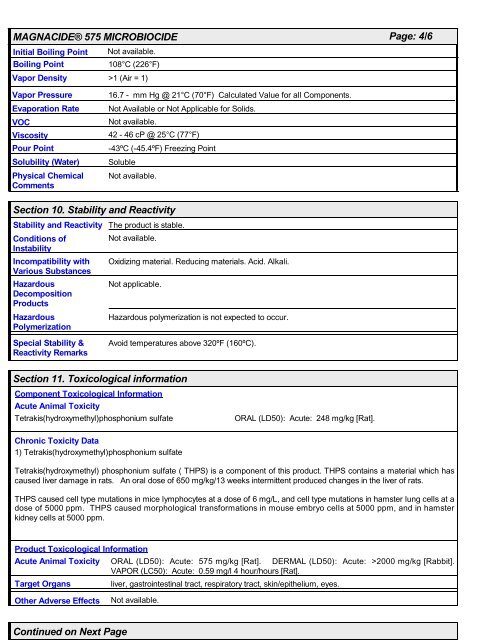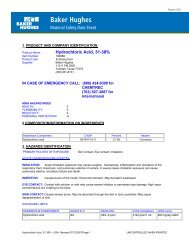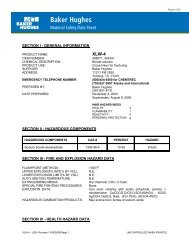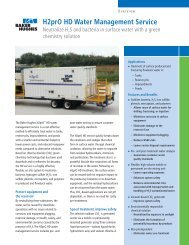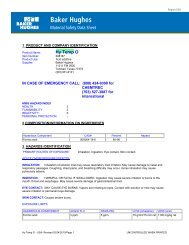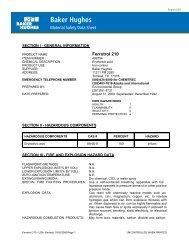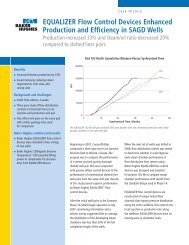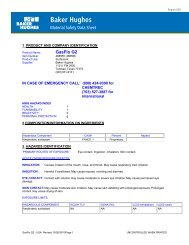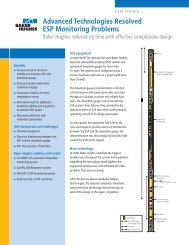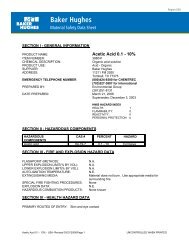MSDS 54KB - Baker Hughes
MSDS 54KB - Baker Hughes
MSDS 54KB - Baker Hughes
- No tags were found...
Create successful ePaper yourself
Turn your PDF publications into a flip-book with our unique Google optimized e-Paper software.
MAGNACIDE® 575 MICROBIOCIDE Page: 4/6Initial Boiling Point Not available.Boiling Point 108°C (226°F)Vapor Density >1 (Air = 1)Vapor PressureEvaporation RateVOCViscosityPour PointSolubility (Water)Physical ChemicalComments16.7 - mm Hg @ 21°C (70°F) Calculated Value for all Components.Not Available or Not Applicable for Solids.Not available.42 - 46 cP @ 25°C (77°F)-43ºC (-45.4ºF) Freezing PointSolubleNot available.Section 10. Stability and ReactivityStability and ReactivityConditions ofInstabilityIncompatibility withVarious SubstancesHazardousDecompositionProductsHazardousPolymerizationSpecial Stability &Reactivity RemarksThe product is stable.Not available.Oxidizing material. Reducing materials. Acid. Alkali.Not applicable.Hazardous polymerization is not expected to occur.Avoid temperatures above 320ºF (160ºC).Section 11. Toxicological informationComponent Toxicological InformationAcute Animal ToxicityTetrakis(hydroxymethyl)phosphonium sulfateORAL (LD50): Acute: 248 mg/kg [Rat].Chronic Toxicity Data1) Tetrakis(hydroxymethyl)phosphonium sulfateTetrakis(hydroxymethyl) phosphonium sulfate ( THPS) is a component of this product. THPS contains a material which hascaused liver damage in rats. An oral dose of 650 mg/kg/13 weeks intermittent produced changes in the liver of rats.THPS caused cell type mutations in mice lymphocytes at a dose of 6 mg/L, and cell type mutations in hamster lung cells at adose of 5000 ppm. THPS caused morphological transformations in mouse embryo cells at 5000 ppm, and in hamsterkidney cells at 5000 ppm.Product Toxicological InformationAcute Animal Toxicity ORAL (LD50): Acute: 575 mg/kg [Rat]. DERMAL (LD50): Acute: >2000 mg/kg [Rabbit].VAPOR (LC50): Acute: 0.59 mg/l 4 hour/hours [Rat].Target Organsliver, gastrointestinal tract, respiratory tract, skin/epithelium, eyes.Other Adverse EffectsNot available.Continued on Next Page


